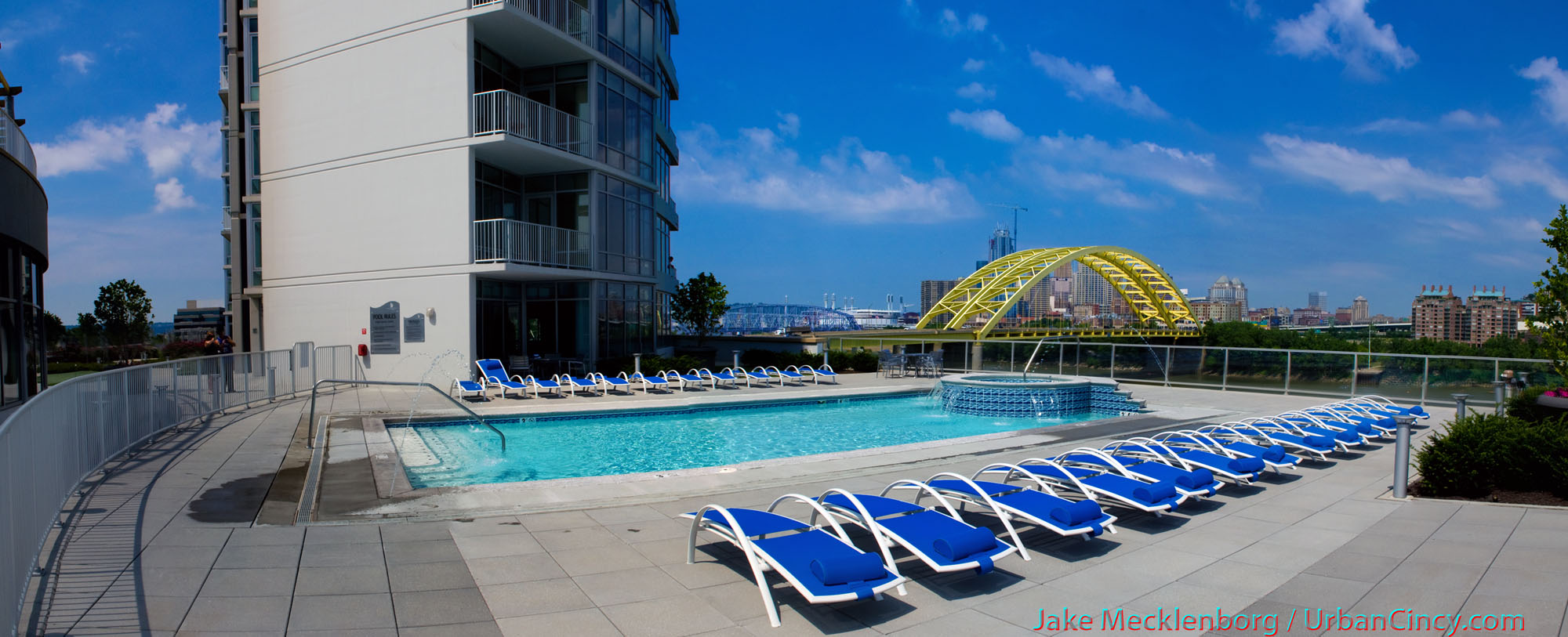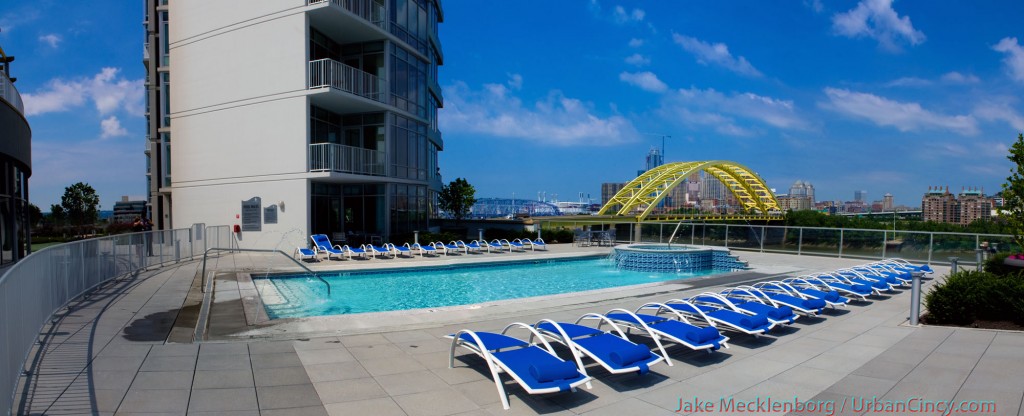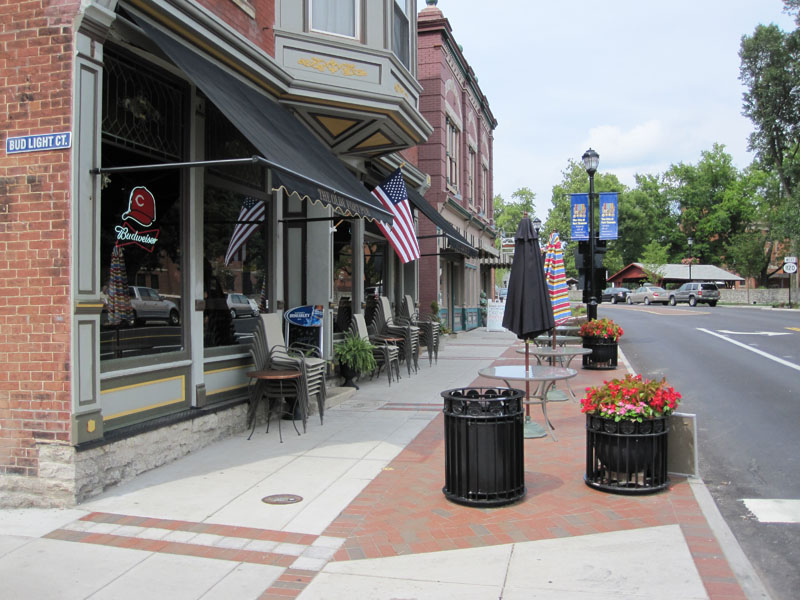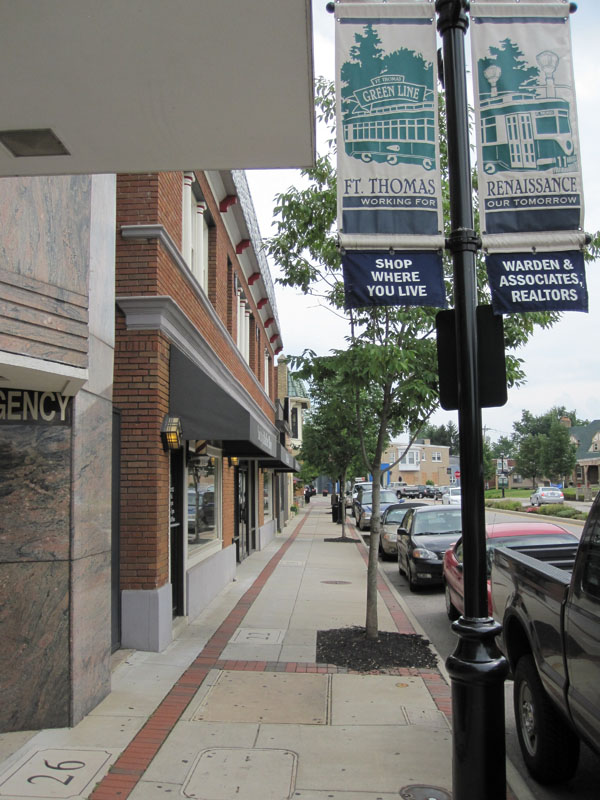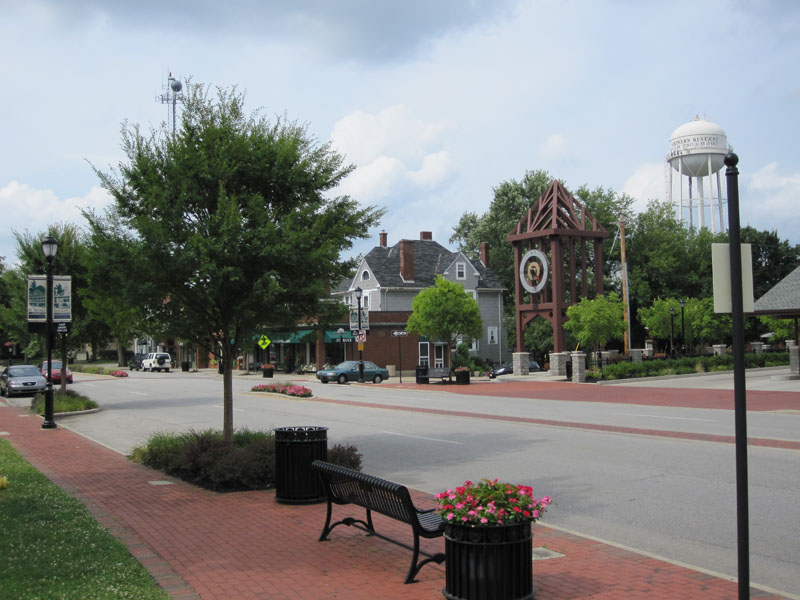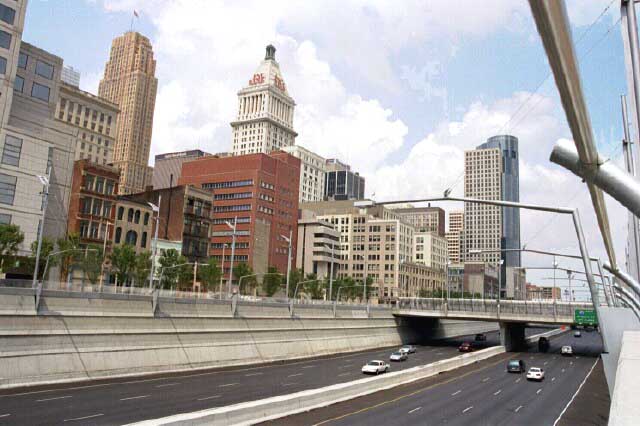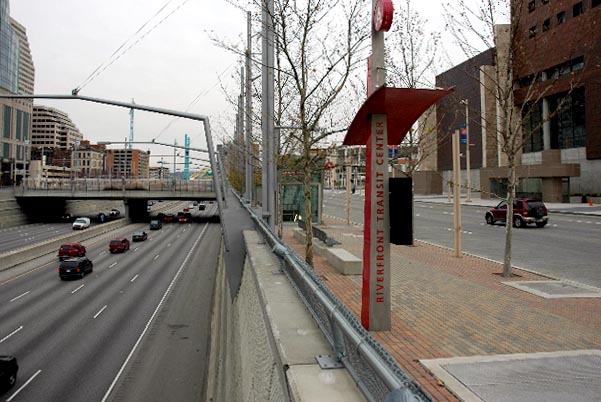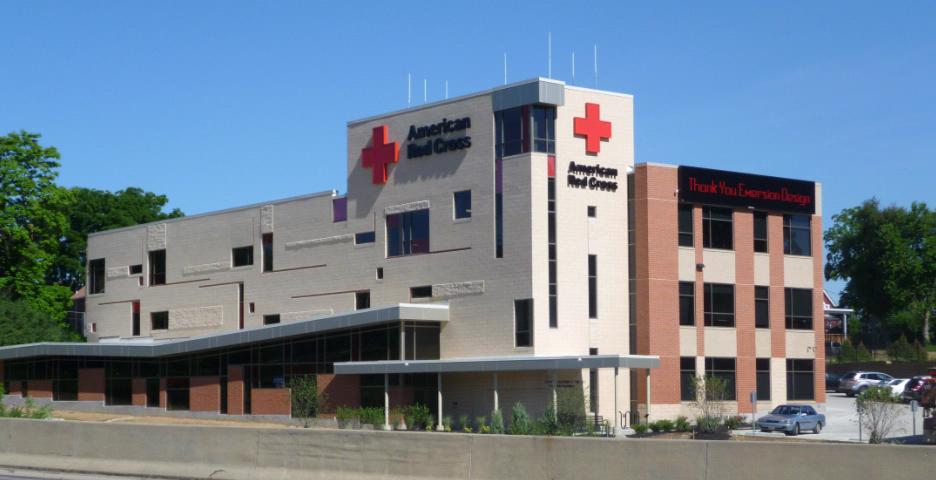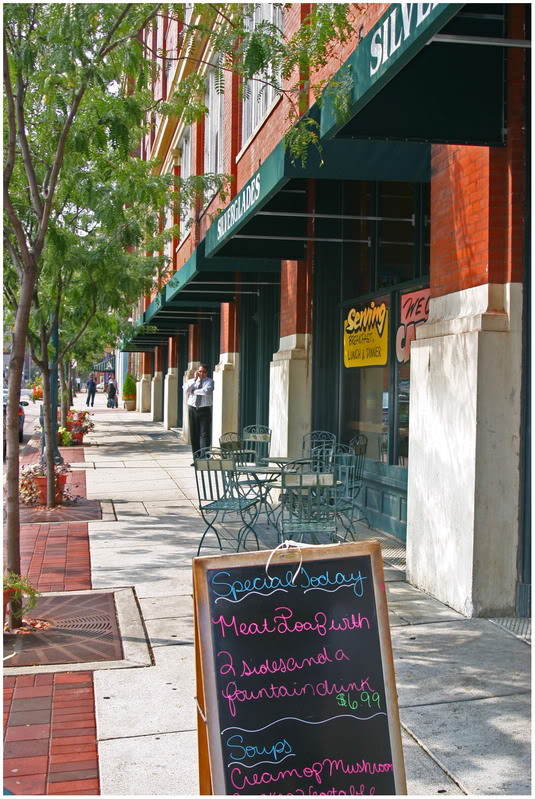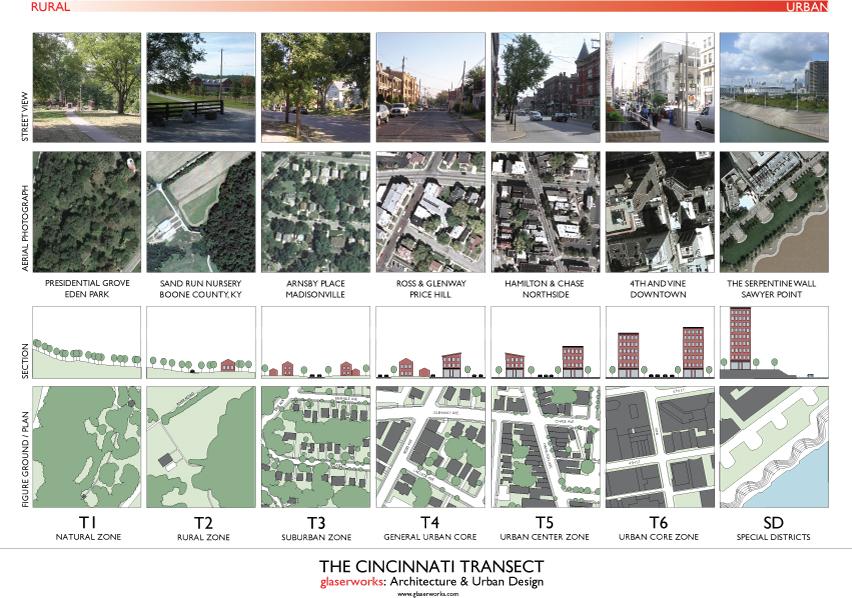Newport saw the completion of its first high-rise tower when the 21-story SouthShore condominium tower began welcoming residents over a year ago. With much of the tower now occupied, UrbanCincy was invited to tour the dramatic riverfront building to see where it stands now.
The building soars 240 feet above Newport, overlooking the Daniel Carter Beard “Big Mac” Bridge and downtown Cincinnati. SouthShore’s 61 luxury condominium units range in size from 1br to a 5,000 square-foot penthouse that encompasses the entire 21st floor. Condominiums range from $395,000 to $3.3 million for the large penthouse unit.
One of the most unique features of the SouthShore tower is its front loaded design that allows each unit to face north toward the Ohio River and downtown Cincinnati – a common design approach in high-end, waterfront residential towers. The building was intentionally designed with all of the mechanical features facing away from the river so that all the residents have stunning views of downtown, Mt. Adams and the river. Each unit also features a terrace, which range in size from a modest sitting area to an enormous 3,000 square-foot outdoor terrace for the penthouse.
With potential flooding being a concern for the structure, architects designed the building to be integrated right into the levee. The first four floors of the structure is a parking garage for residents and visitors, which feature two sets of floodwalls. If the City of Newport must shut their floodwall to protect the city from rising waters, residents at SouthShore can still exit from the complex’s private floodgate. The building then narrows as it rises from the garage, creating ample rooftop deck space for a swimming pool with fountains and a hot tub, an 1,800 square-foot fitness center, putting green, walking trails, gardens, and a two-level clubhouse for residents.
On the ground level, many of the residents use a secure storage area for their bicycles and segways. The building management is also looking to purchase two segways for residents to use at their leisure. Many residents walk to Kroger in Newport, spend time at Newport on the Levee, or walk or bike into other parts of Cincinnati. It is just a ten minute walk from SouthShore to The Banks development on the other side of the river. Realtors from Sibcy Cline also speak highly of the building’s soundproofing which allows residents to enjoy peace and quiet despite sharing walls with their neighbors.
Capital Investment Group, the project’s developer, has plans to build a similar tower next door to SouthShore called The Marina. This residential tower is planned to feature many of the same amenities with the addition of private dock space for homeowners in the new 100-slip marina approved by the US Army Corps of Engineers early in 2009.
Those interested in obtaining more information about condominiums at SouthShore can contact Christine Schoonover with Sibcy Cline at (859) 431-8000 or CSchoonover@sibcycline.com. When you speak with her, mention that you read about the condos on UrbanCincy.
